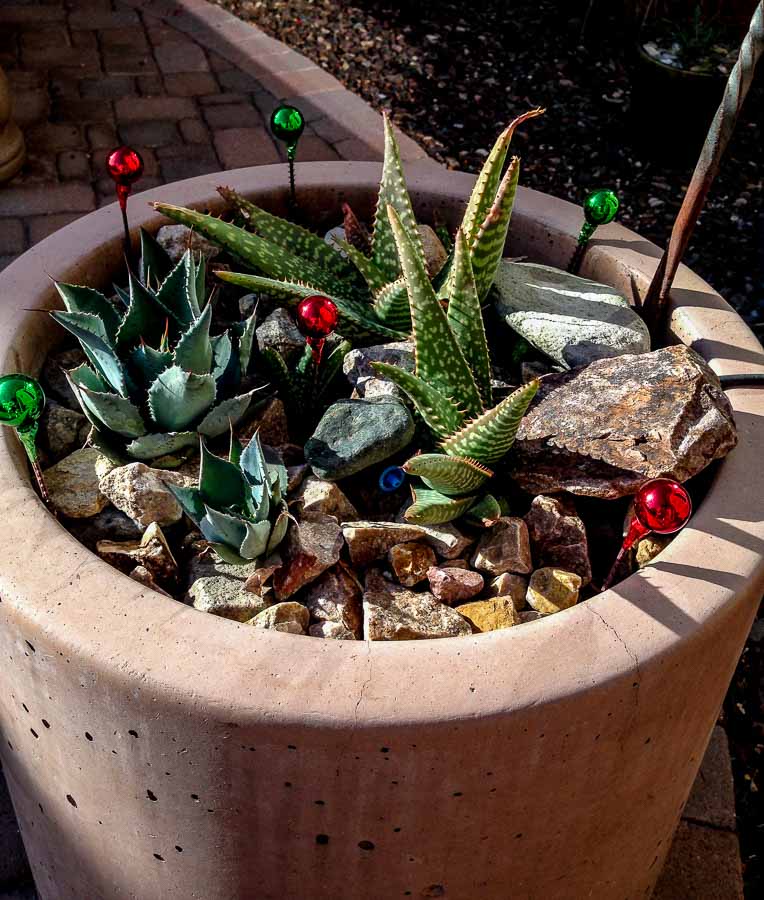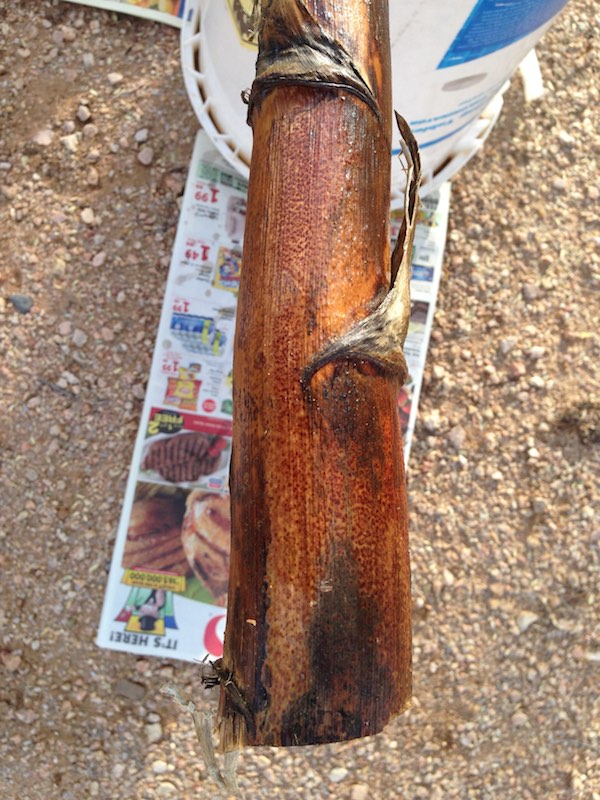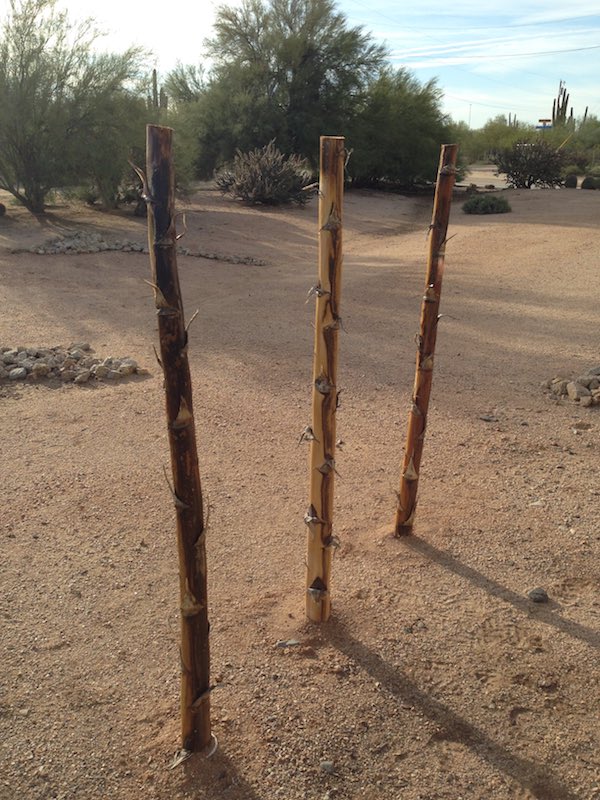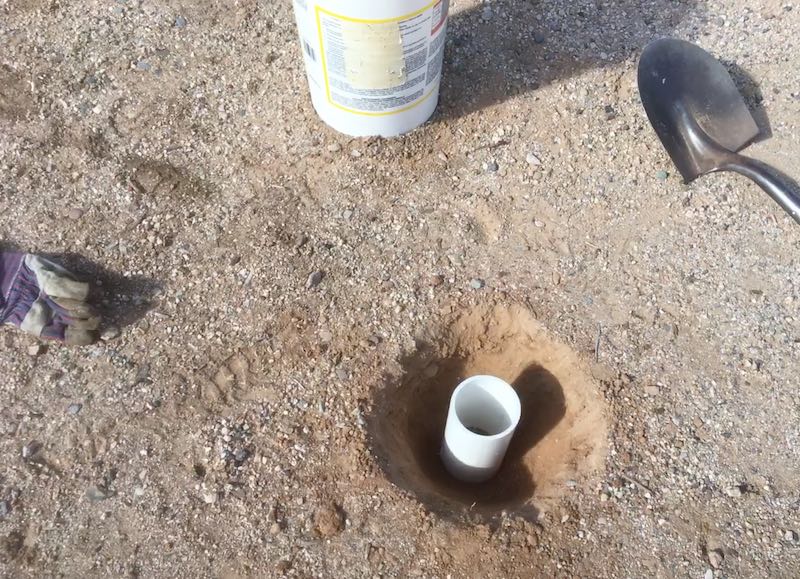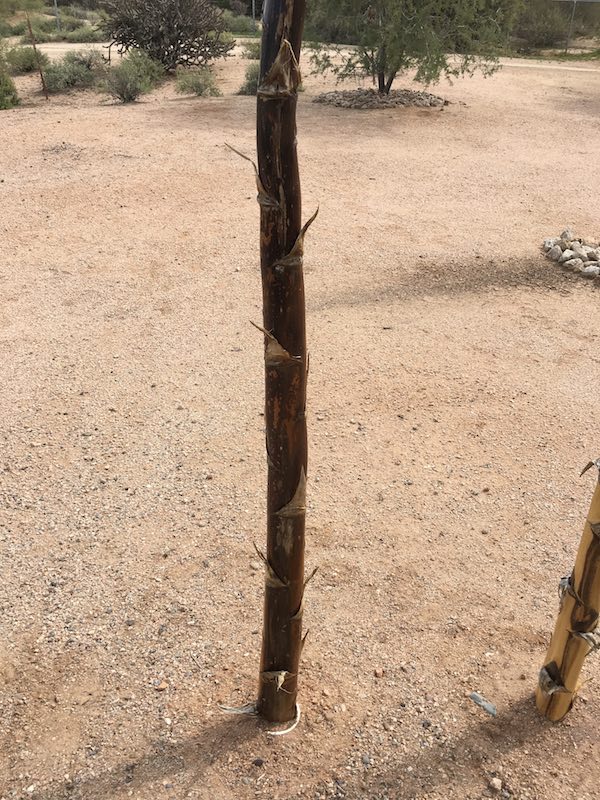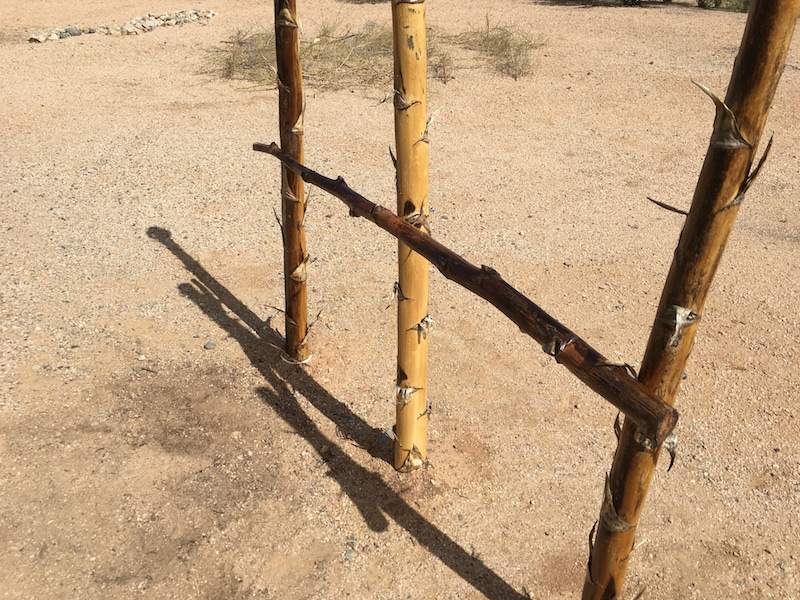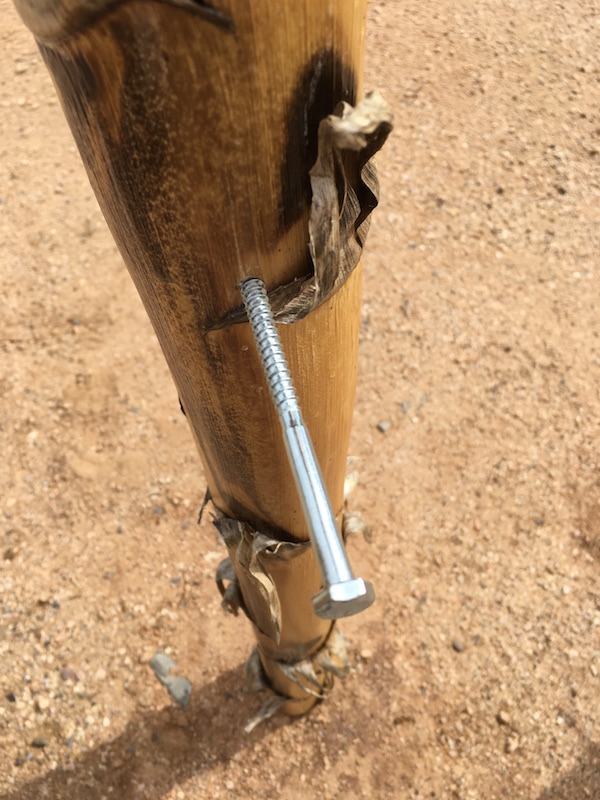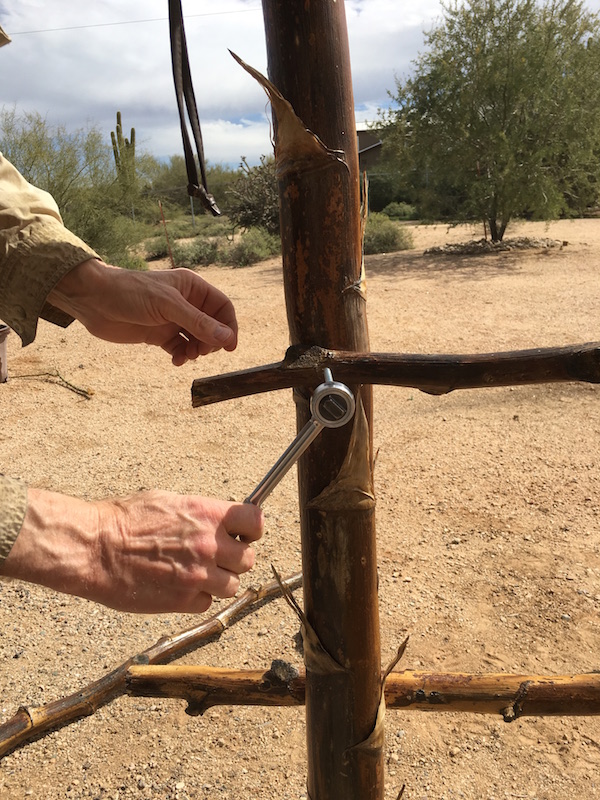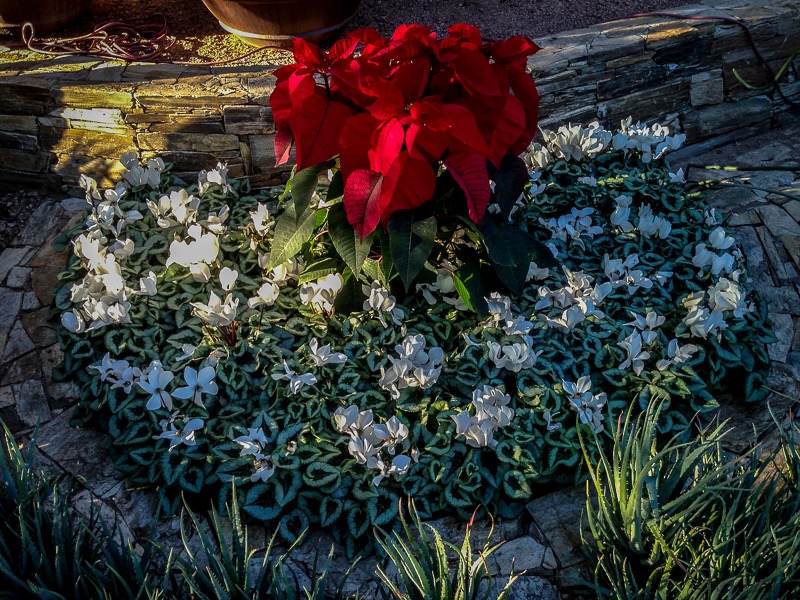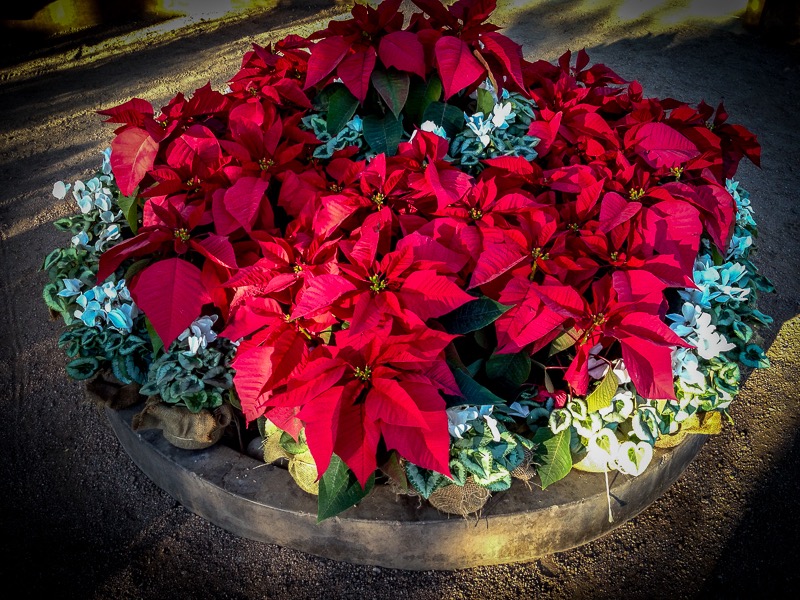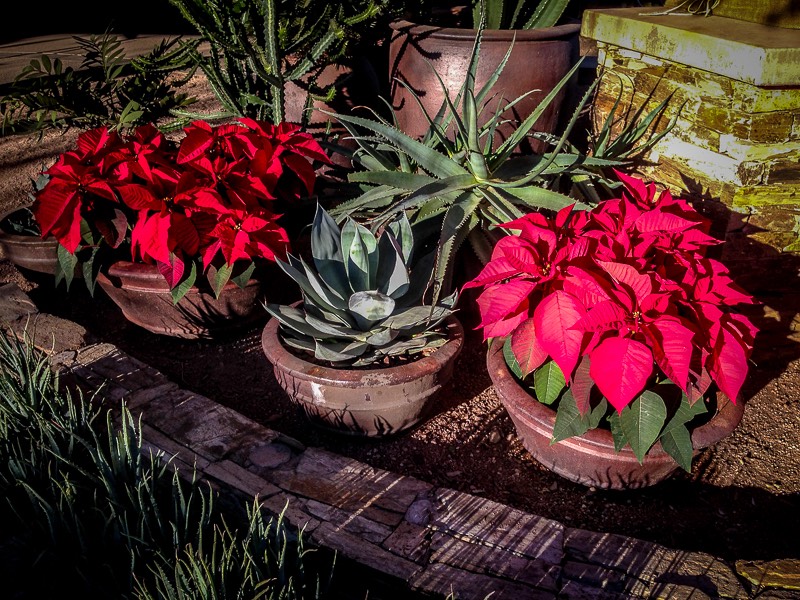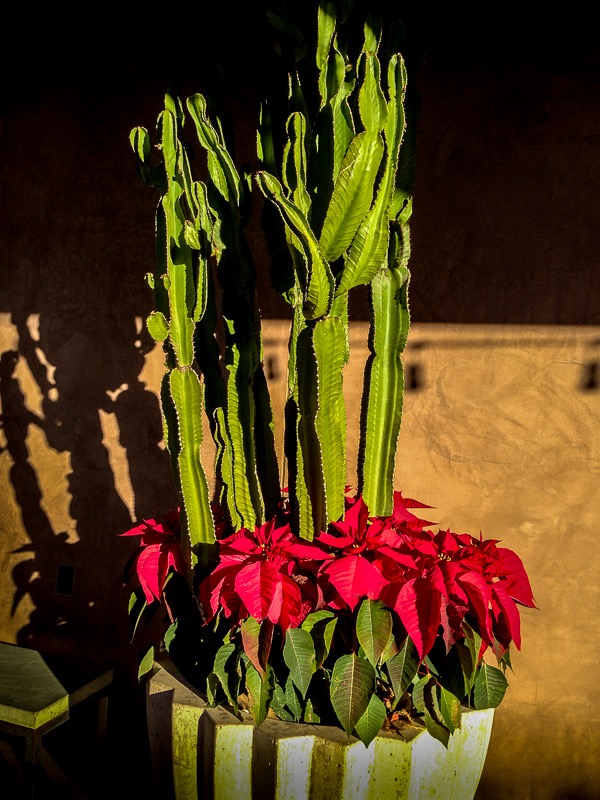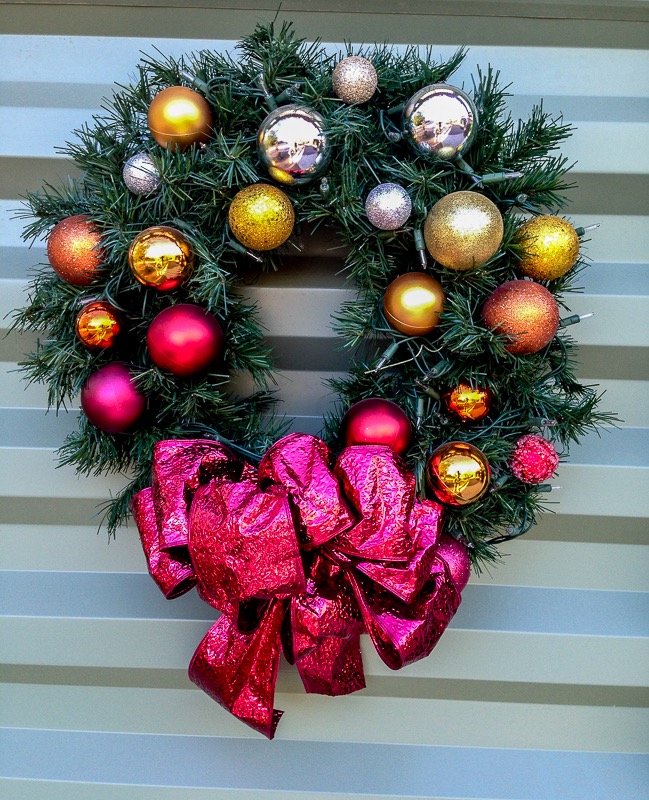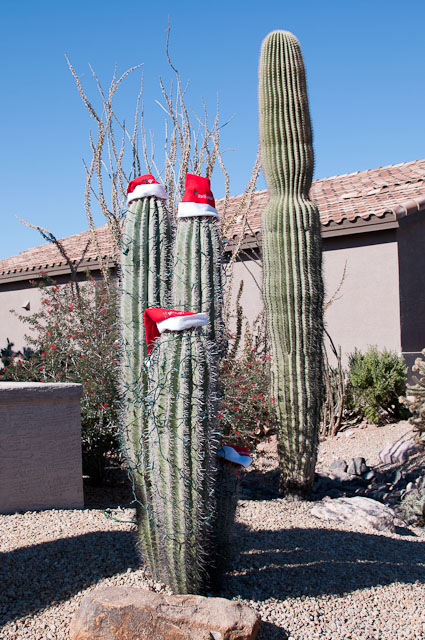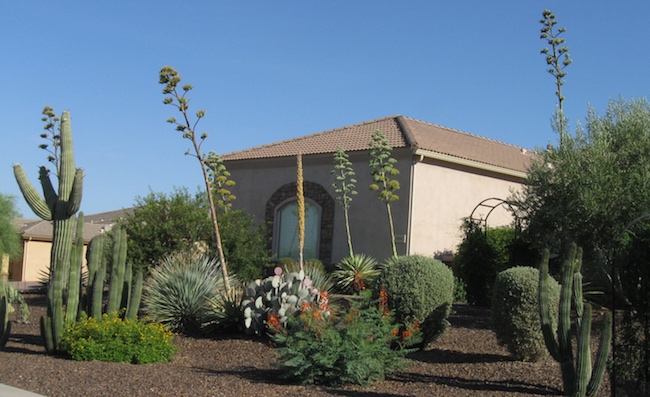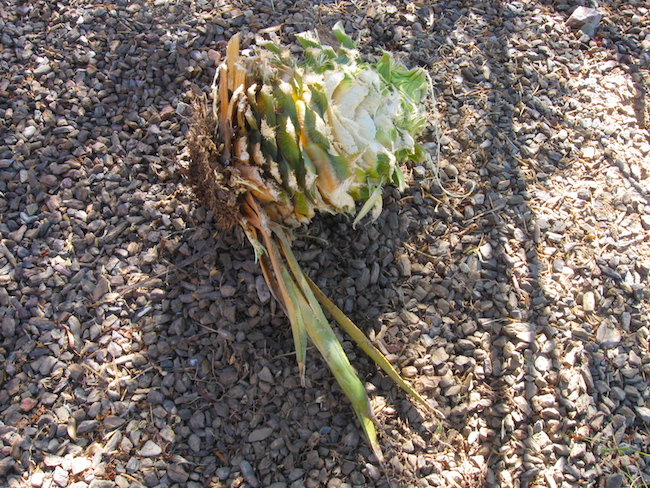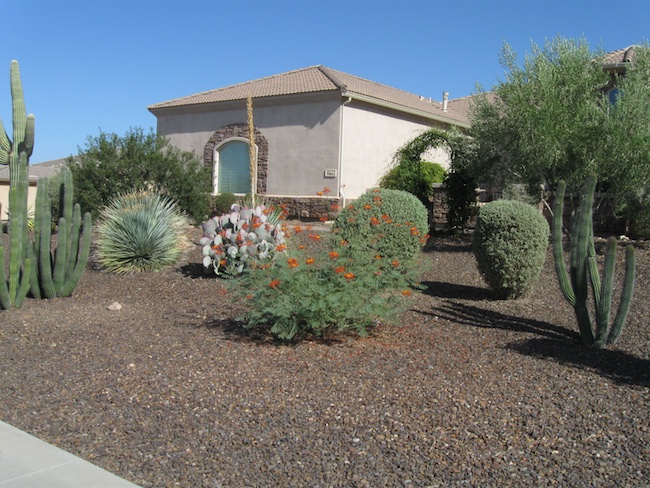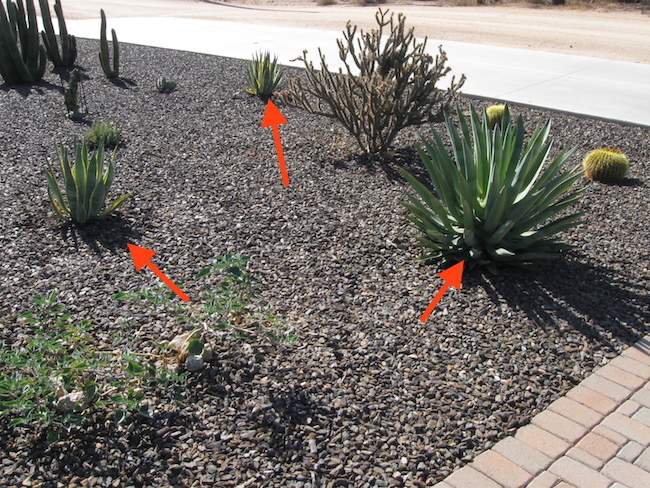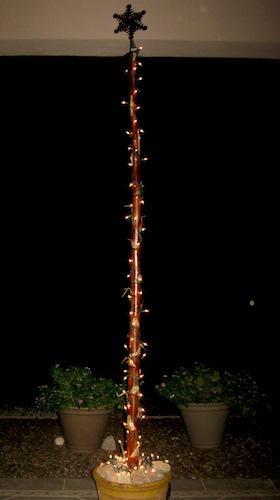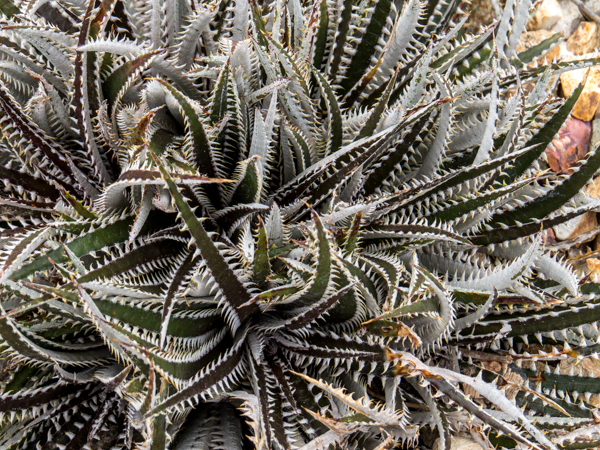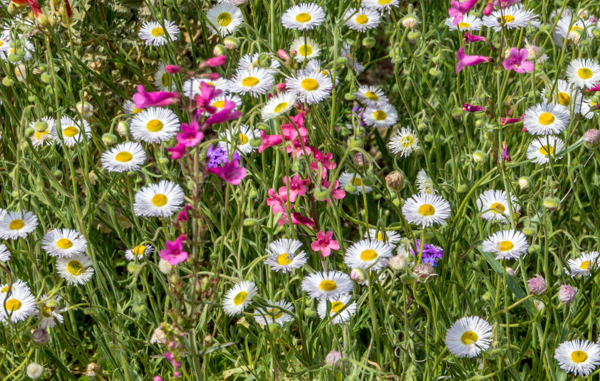As most people can imagine, there isn’t too much in the Sonoran Desert of Arizona that would innately remind the casual visitor of the overall Christmas/Winter Holiday Season. It does get cool during the late fall and winter evenings. We hit temperatures in the forties many nights during the end of November and through December. We can also get more rain this time of year, but generally not as much as January.
So residents of the Phoenix area use their creativity to devise ways of decorating for the winter holidays.
Here is a photograph of a variegated agave we had in our landscape at one time. The plant has thick leaves with sharp edges and each leaf has a sharp point on the end. That is how it survives in the desert. Without all those sharp edges and points, it would be eaten to death by rabbits, javelinas and other denizens.
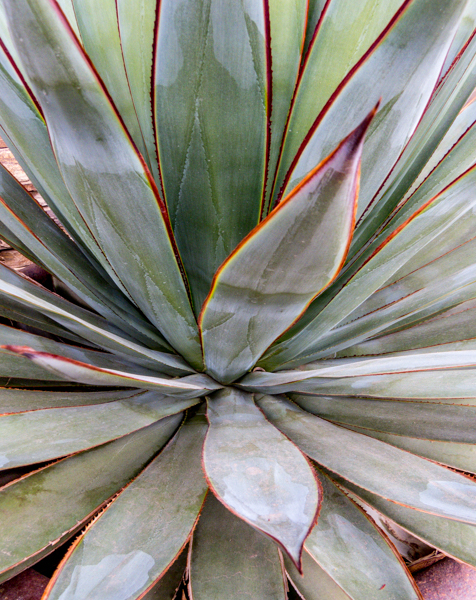
People have discovered that those sharp tips at the ends of the leaves have another good use!
Gold colored Christmas balls create a crown-like appearance on top of this agave in the front yard. They play well against the green of the agave and the rest of the residential desert landscape.

If solid gold is too regal for you and you want more of a standard Christmas color scheme, a variety of colors would work just as well.
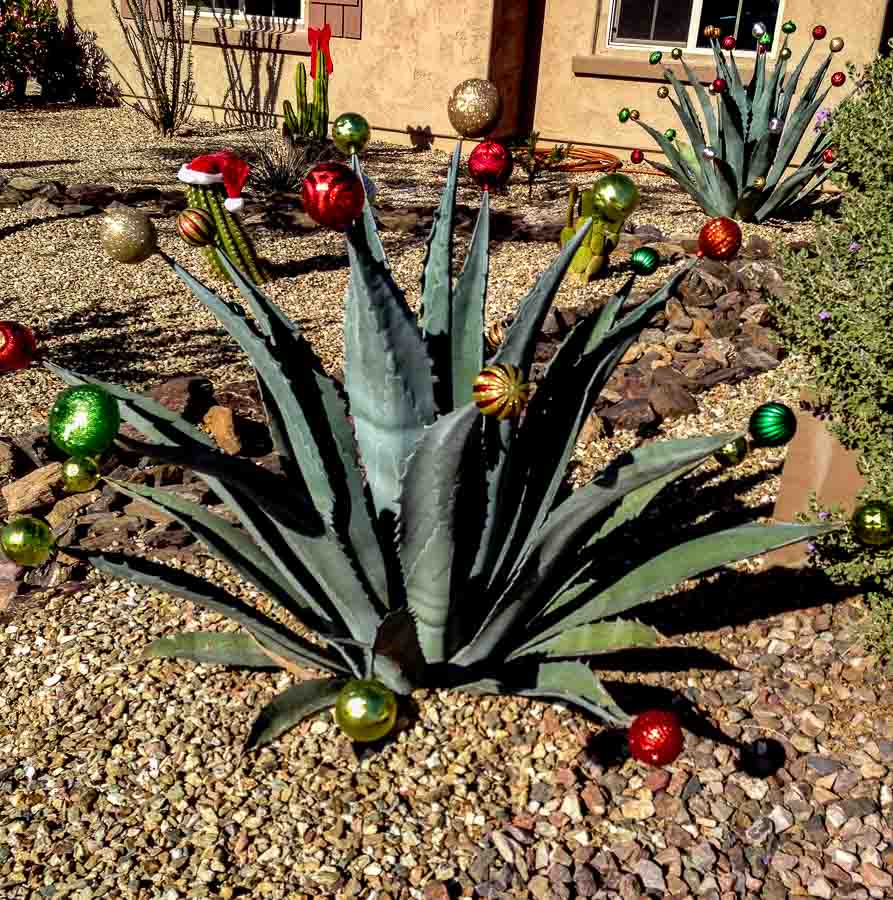
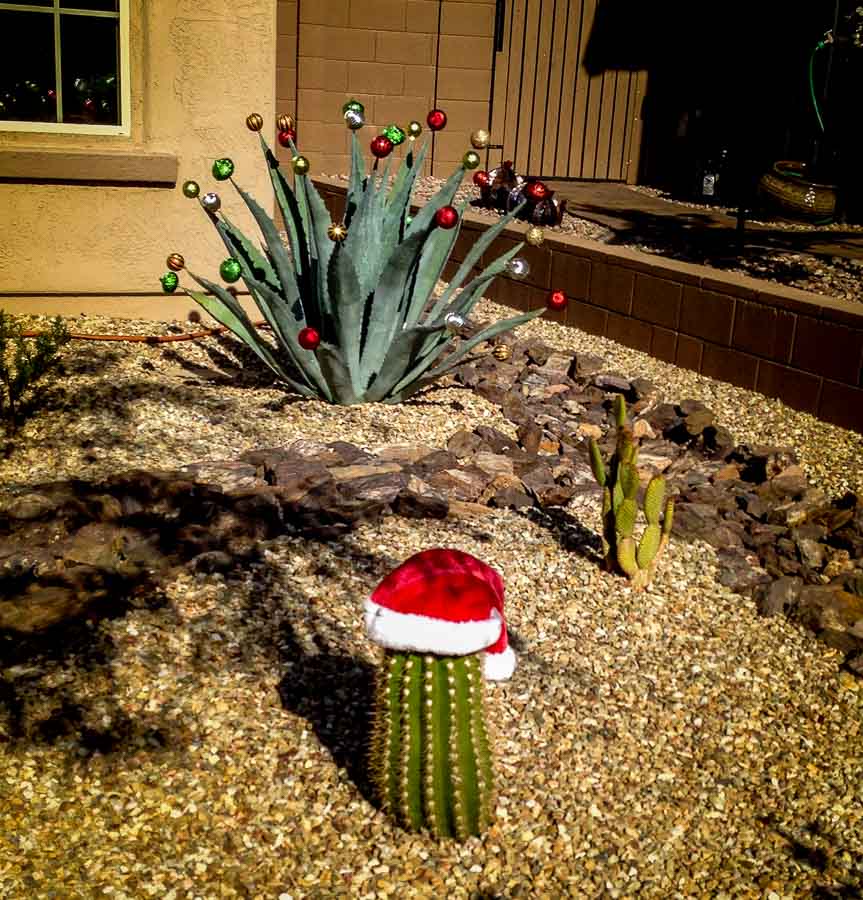
The increased color palette (above) plays well with other holiday ornaments such as the foreground cactus with Santa hat.
Instead of plain poinsettias, how about faux poinsettia leaves attached to the branches of the Ocotillo?
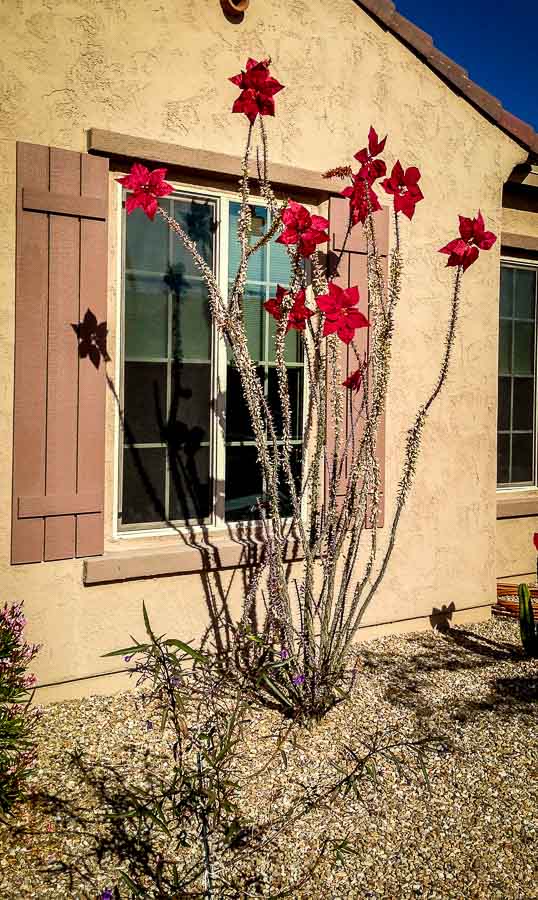
(BTW – If you want to see what an Ocotillo looks like during the active growing season with leaves and without fake ornamentation, click HERE)
For a more subtle spot decoration, smaller colorful Christmas balls can be uniquely placed in planters.
